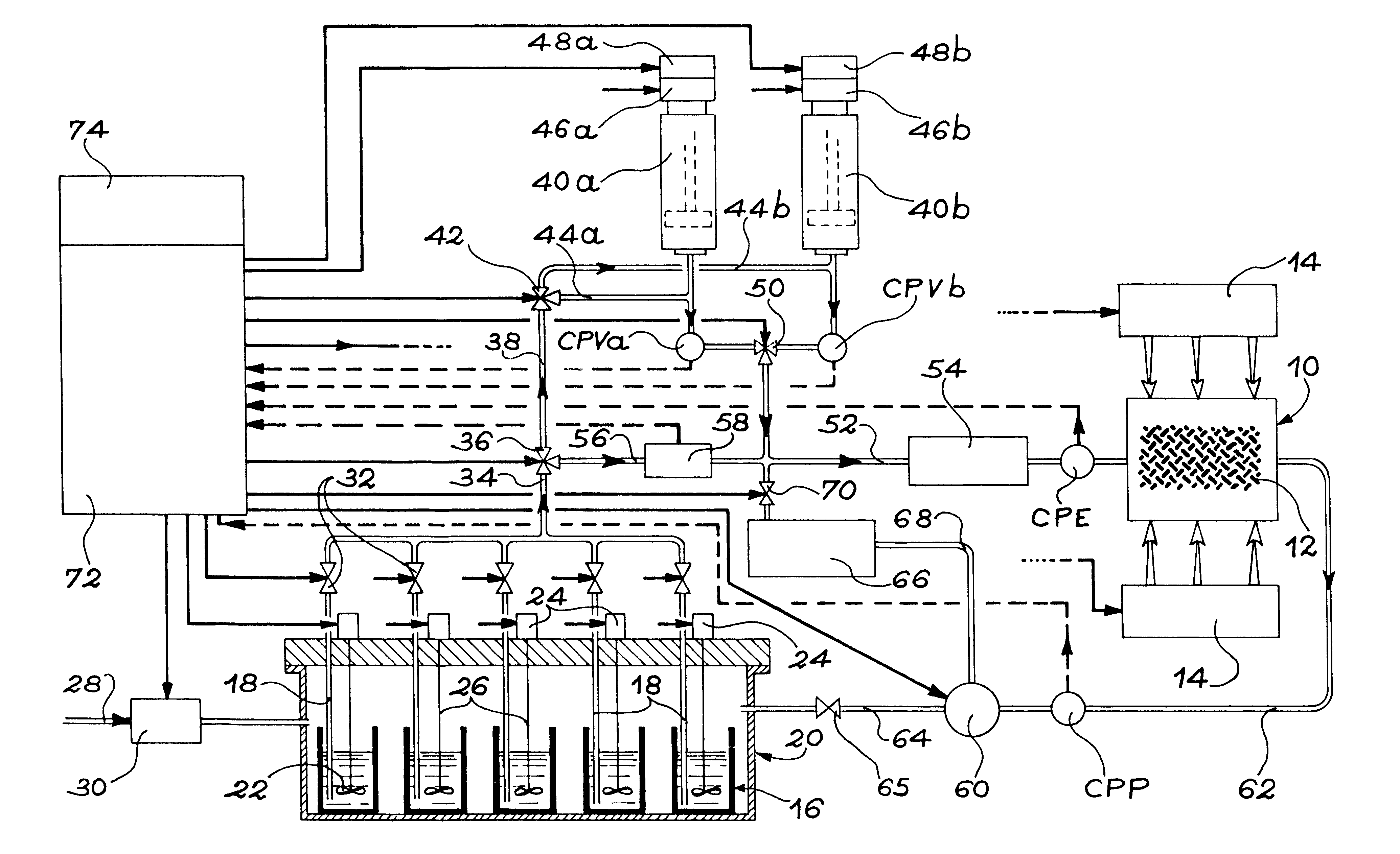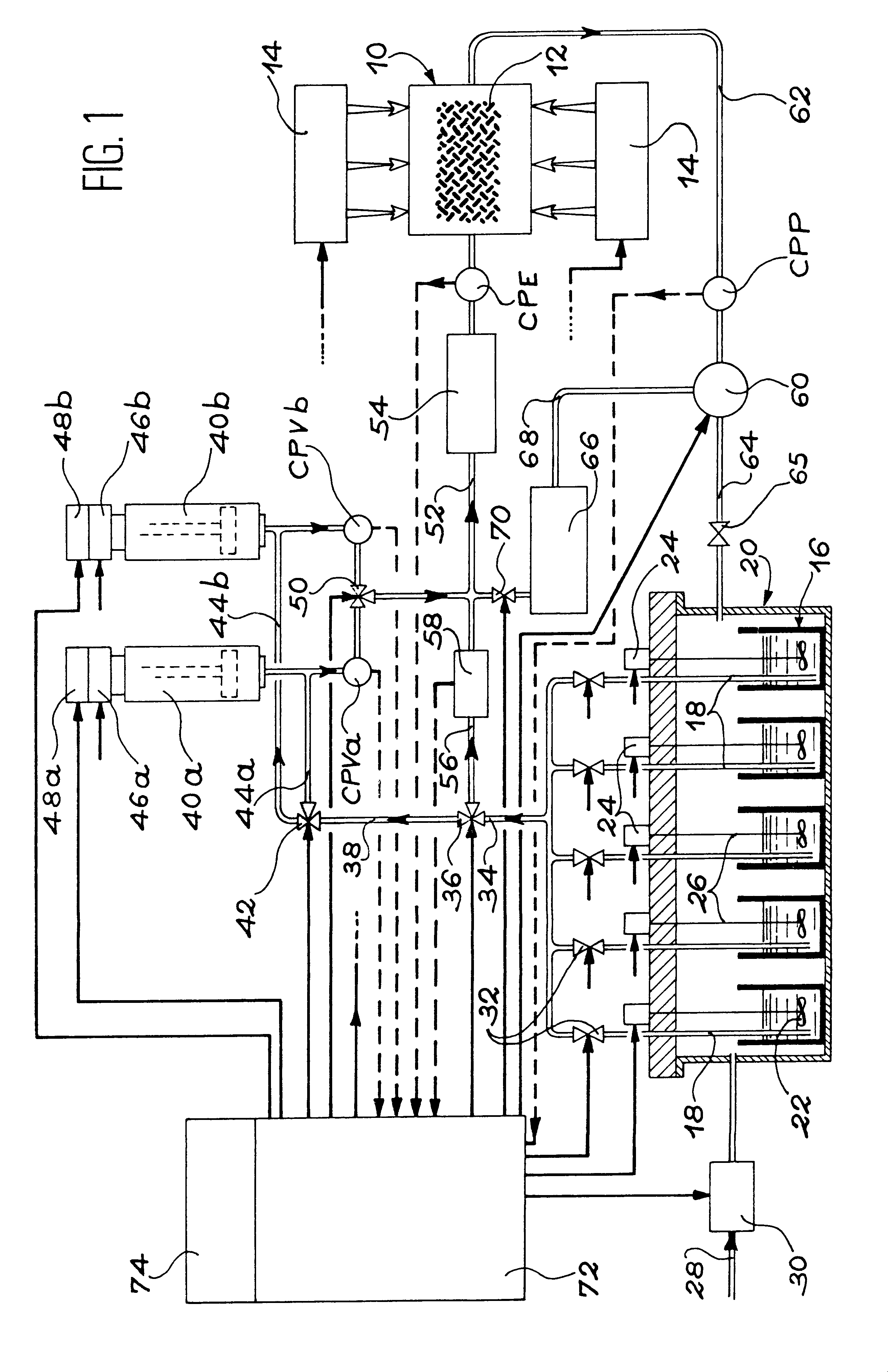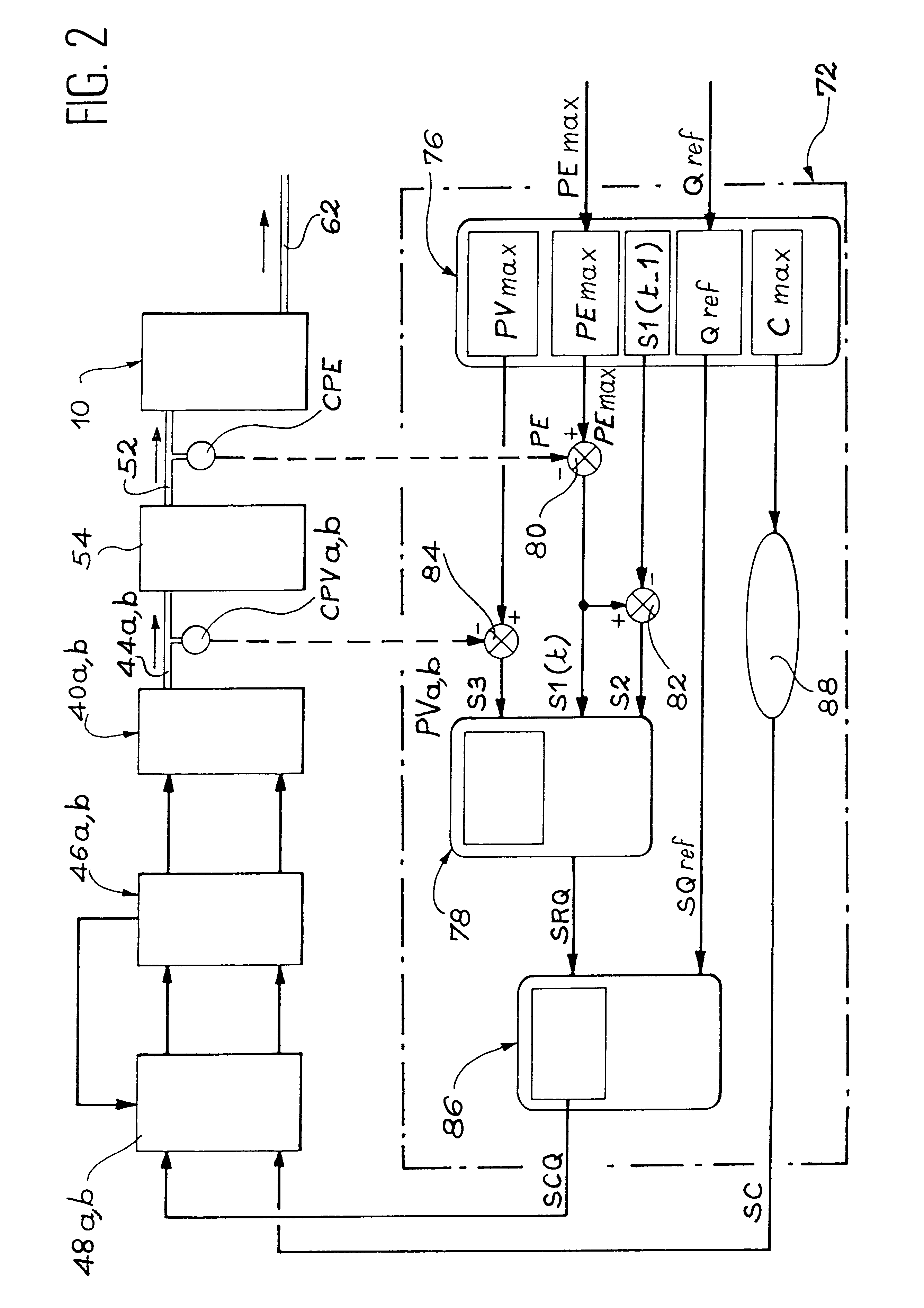Apparatus for manufacturing composite parts produced by resin transfer molding
a technology of resin transfer molding and composite parts, which is applied in the direction of auxillary shaping apparatus, manufacturing tools, cocoa, etc., can solve the problems of preventing the penetration of resin into the preform, and reducing the production efficiency of the preform
- Summary
- Abstract
- Description
- Claims
- Application Information
AI Technical Summary
Benefits of technology
Problems solved by technology
Method used
Image
Examples
Embodiment Construction
In the preferred embodiment shown schematically in FIG. 1, the apparatus according to the invention comprises one or more molds 10 suitable for manufacturing composite parts using resin transfer molding. The cavity (not shown) of each mold 10 is constructed so that its shape and measurements correspond to the external characteristics of the part to be produced. The cavity is designed to accept a fibrous preform 12 made of preassembled dry organic fibers. Each mold 10 is fitted with heating means (not shown) designed to maintain the mold at the required temperature during injection of the resin and to subject it to a polymerization cycle when the injection phase has been completed.
Each mold 10 is also fitted with compression means indicated by arrows 14 in FIG. 1. These compression means 14 are designed to apply a controlled compression force with an adjustable value to fibrous preform 12. As a non-limitative example, said compression means 14 may comprise one or more inflatable blad...
PUM
| Property | Measurement | Unit |
|---|---|---|
| porosity | aaaaa | aaaaa |
| pressure | aaaaa | aaaaa |
| constant pressure | aaaaa | aaaaa |
Abstract
Description
Claims
Application Information
 Login to View More
Login to View More - R&D
- Intellectual Property
- Life Sciences
- Materials
- Tech Scout
- Unparalleled Data Quality
- Higher Quality Content
- 60% Fewer Hallucinations
Browse by: Latest US Patents, China's latest patents, Technical Efficacy Thesaurus, Application Domain, Technology Topic, Popular Technical Reports.
© 2025 PatSnap. All rights reserved.Legal|Privacy policy|Modern Slavery Act Transparency Statement|Sitemap|About US| Contact US: help@patsnap.com



